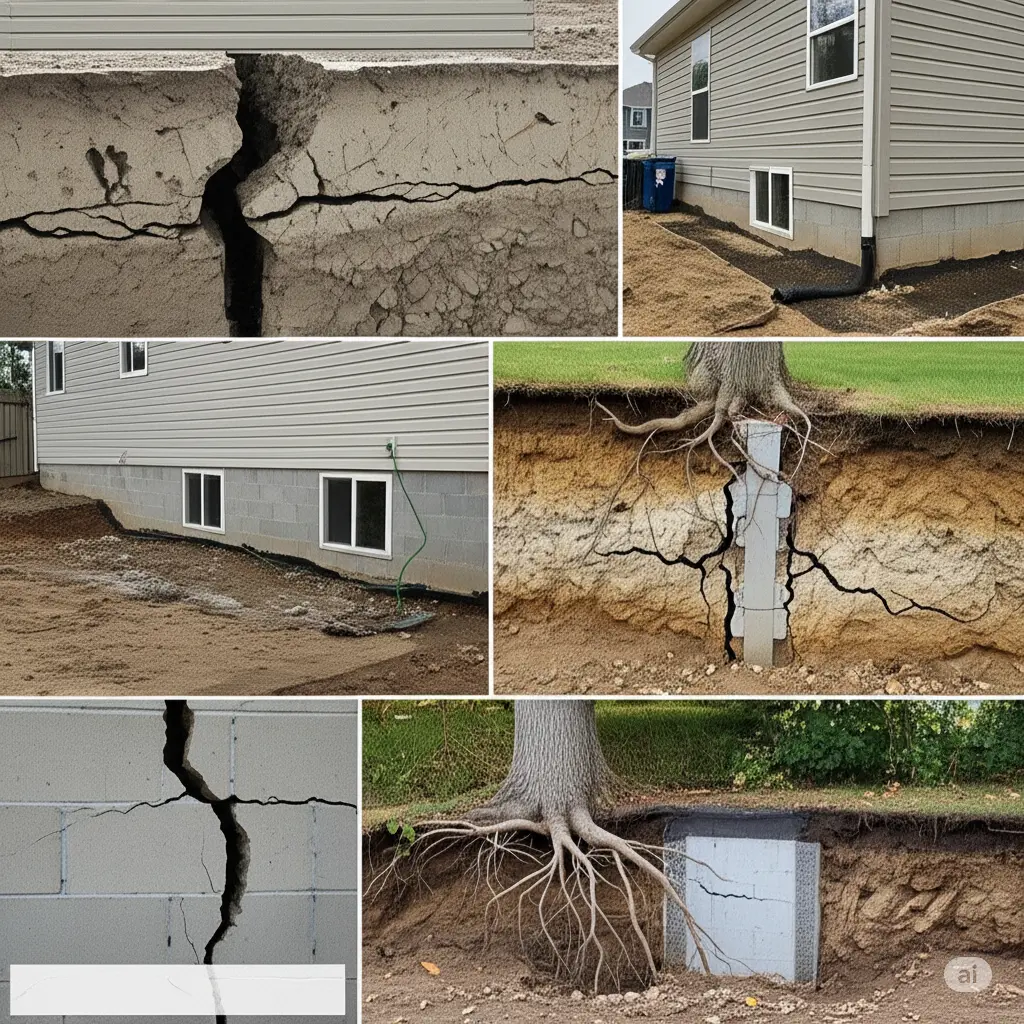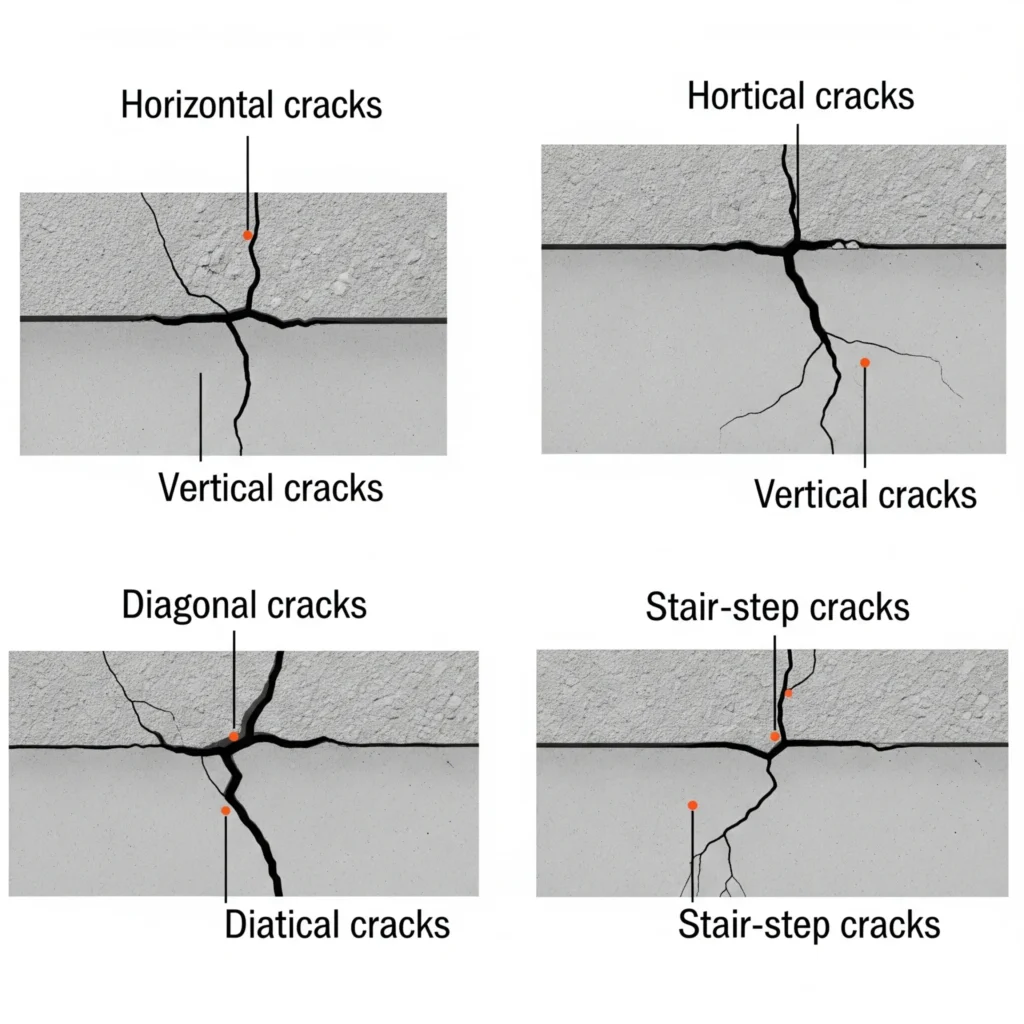Noticed a crack in your foundation? Wondering what it means and how to fix it? You’re not alone. Foundation cracks are one of the most common issues homeowners face, and while they can look intimidating, many cracks are manageable—if you know what to do.
This step-by-step guide will walk you through everything you need to know about foundation crack repair, from spotting the early signs to deciding when it’s time to call in a pro.
You might like: Unfixable Foundation Problems: What You Need to Know

What Causes Foundation Cracks?
Before jumping into repairs, it’s important to understand why foundation cracks happen in the first place. Common causes include:
Soil movement or settlement
Excess moisture or poor drainage
Tree roots growing too close to the foundation
Poor construction or materials
Extreme weather changes
Knowing the cause can help you prevent future cracks after repairs are made.
Are Foundation Cacks Serious?
Quick Answer: Some are. Some aren’t.
Hairline cracks? Often just cosmetic.
Wider, stair-step, or horizontal cracks? Could indicate structural issues.
Use this quick guide:
| Crack Type | Severity | Action Needed |
|---|---|---|
| Hairline vertical crack | Low (common) | Monitor, seal if needed |
| Wide vertical crack (>1/4″) | Medium | Seal, may need inspection |
| Stair-step crack in brick | Medium to high | Inspect and repair |
| Horizontal crack | High (structural risk) | Call a professional ASAP |
Step-by-Step: How to Repair Foundation Cracks
Here’s how you can repair minor foundation cracks yourself:
Step 1: Inspect and Assess the Crack
Measure the width and length of the crack.
Check if it’s growing over time by marking the ends and monitoring.
Determine whether it’s vertical, diagonal, or horizontal.
Step 2: Clean the Crack
Use a wire brush or vacuum to remove debris.
The surface must be clean and dry for the repair material to bond.
Step 3: Choose Your Repair Material
For small, non-structural cracks:
Epoxy injection kits (best for waterproofing and bonding)
Polyurethane foam kits (flexible, good for active cracks)
Hydraulic cement (quick fix for water leaks)
Step 4: Apply the Sealant or Filler
Follow the manufacturer’s instructions carefully.
Insert injection ports (if using epoxy/foam) and seal the surface.
Inject the filler slowly and allow time to cure.
Step 5: Paint or Seal the Wall (Optional)
Once dry, you can paint over the repair.
Consider applying a waterproof sealant to prevent moisture issues.
When to Call a Foundation Repair Expert
DIY isn’t always enough. Call a professional if you notice:
Cracks wider than 1/4 inch
Horizontal or stair-step cracks
Bulging or bowing walls
Repeated leaks or moisture problems
Cracks that keep growing over time
Professionals can evaluate your foundation with laser levels, soil testing, or structural assessments to recommend permanent solutions.
How Much Does Foundation Crack Repair Cost?
DIY repairs: $20–$200 (for sealant kits)
Professional injection repair: $300–$800 per crack
Structural repairs: $2,000–$10,000+, depending on severity
💡 Tip: Get multiple estimates and make sure the contractor offers a warranty.
How to Prevent Foundation Cracks in the Future
Preventative care goes a long way:
Ensure proper drainage around your home
Clean and extend gutter downspouts
Avoid planting trees too close
Install a sump pump if your basement is prone to flooding
Regularly inspect your foundation for early signs
Is Repairing Worth It In The Long Run?
Yes, repairing foundation cracks is absolutely worth it. Ignoring even small cracks can lead to major structural damage, water intrusion, mold growth, and reduced property value.
Early repairs are typically low-cost and manageable. Waiting can mean paying thousands for structural fixes or losing resale value. Plus, a well-maintained foundation gives buyers confidence and protects your biggest investment—your home.
In short, timely repairs not only fix the issue but also prevent future problems, save money, and extend the life of your foundation.
Final Thoughts
Cracks in your foundation don’t have to mean disaster. With a little know-how and the right tools, you can handle minor repairs yourself and know when it’s time to bring in the experts.
Whether you’re sealing a small crack or planning a major foundation fix, taking action early can save you money, stress, and serious structural issues down the road.
Frequently Asked Questions (FAQs)
1. Can I ignore small foundation cracks?
Small hairline cracks may seem harmless, but ignoring them can lead to bigger problems. Moisture can seep in, and they may widen over time. It’s best to monitor regularly and seal them early to avoid costly repairs later.
2. How do I know if a crack is structural?
Structural cracks are usually wider than 1/4 inch, horizontal, or form a stair-step pattern. They may be signs of shifting or settling in the foundation. If you see these, it’s important to have a professional inspect the area to ensure your home’s safety and stability.
3. Is foundation crack repair covered by insurance?
Most home insurance policies don’t cover foundation repairs caused by natural settling or poor construction. However, if the damage results from a covered event—like a plumbing leak or flood—you may be eligible. Always review your policy details or speak with your insurance provider directly.
Need Help with Foundation Repairs?
If you’re in the [Insert Your Service Area] area and need professional help, R.L. NELSON Foundation Solutions is just a call away.
📞 281-420-1739
📍 Serving Texas homeowners with trusted solutions.





